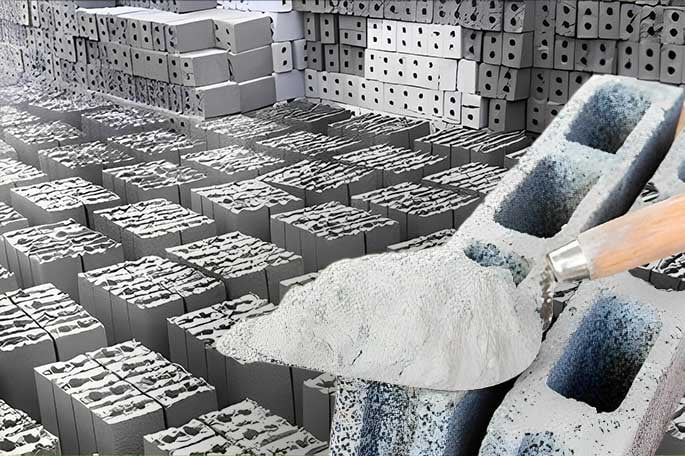A new rule regarding coal ash disposal and cleanup issued by the Environmental Protection Agency (EPA) could be enacted in May 2024. The current proposal is designed to modify a 2015 rule, “Disposal of CCR from Electric Utilities,” or the Coal Ash Rule, addressing the management of fly ash and other coal combustion residuals.
The revision comes in response to a suit brought to court by various public interest groups concerned over coal ash pollution, the toxic chemicals it contains and related environmental and health hazards. The revised rule extends federal coal ash regulations to monitor, close and clean up older ponds, landfills and dump sites excluded in the original 2015 ruling.
The EPA estimates there are approximately 500 unlined coal ash ponds in the U.S. and even more landfills within 40 states at hundreds of coal plants. Equipment and systems exist to help utilities responsible for compliance with this ruling—systems that can help offset some of the investment necessary for this cleanup by monetizing the fly ash recovered from these efforts. Dust collection systems significantly affect this viable commodity's fly ash conversion and recovery.

Fly ash types and collection
Fly ash consists of two primary types. The first is class F, a fine substance often captured by electrostatic precipitators or baghouses. The second type is bottom ash or class C, which is larger and settles at the bottom of the boiler. Coal power plants generate substantial amounts of fly ash.
The fly ash is fed through a ball mill and then into a rotary calciner, which employs high heat to dry the fly ash and remove impurities. The calciner generates heat of approximately 2000 F to aid the combustion or volatilization of organic compounds and heavy metals such as mercury, arsenic or manganese. The rotary calciner dries the fly ash dredged from ponds or landfills. This process helps improve the fly ash's quality and characteristics, making it more suitable for cement production or as a component for construction materials.
Dust collection systems help contain and capture fly ash in this drying process.
Unique particle size distribution and fluidized behavior
Fly ash exhibits a unique particle size distribution, with the class F particles ranging from 2 to 10 microns and bottom ash particles fitting within a micron range of 70 to 100. The microscopic size of type F particulates, mixed with air, causes these particles to exhibit fluid characteristics similar to the motion or behavior of water. In addition, fly ash dust is exceptionally abrasive due to the silicon dioxide and aluminum dioxide it contains. These flow characteristics pose challenges for dust collection.
Special considerations for dust collection of fly ash
Dust collectors for fly ash require special features to handle its abrasive nature and fluidized tendencies. Any initial contact points, such as airlocks or augers, must be made of abrasive-resistant steel to withstand harsh conditions.
Hard chrome plating or double dump valves often prevent rapid wear in highly abrasive applications, such as fly ash dust collection. A double dump valve can significantly extend equipment lifespan compared to a more common rotary valve, which suffers constant grinding from abrasive material. Additionally, a cyclone can serve as a pre-filter to reduce the dust load on the main baghouse.
High dust loading and temperature management
The dust collectors designed for fly ash purification face high dust loading due to the large percentage of particulate matter being captured. Approximately 90-95% of the product processed in the rotary calciner passes into the dust collector.
Its lightweight and fluidized behavior causes the dust to be drawn into the baghouse instead of dropping out of the bottom into a container. These collectors need to handle several hundred grains of material per cubic foot of air. In addition, calciners subject the fly ash to extremely high temperatures during drying. This air needs to be cooled to facilitate the proper operation of the baghouse.
While a dust collector or baghouse could potentially handle a maximum temperature of up to 500° F, the optimal temperature maximum for a dust collection is 350° F to avoid using exotic materials for the filter media and gaskets.
The filter media required for higher temperatures, above 450° F, would include Teflon® (PTFE) or P84, while gaskets might need to be made of Viton®. These exotic materials can become cost-prohibitive when there are means to lower the temperature, enabling the use of more common materials for filter media and gaskets.
The most common method employed is to design a system that pulls in ambient air to bring the temperature down to 350 F. The ambient air required to lower the temperature helps determine the baghouse size, whether 30,000 CFM or 45,000 CFM, for example.
We incorporate a unique high inlet design in the dust collectors to efficiently handle the high dust loading. This design ensures that most particulate matter drops directly into the hopper while only the finest particles collect on the outer surface of the filter bags. This approach protects the filter media from excessive wear and allows for the effective collection and recovery of fly ash.
Recovered fly ash is a sustainable alternative to virgin materials, promoting greater environmental responsibility and optimizing the efficient use of resources.
Dust collection plays a crucial role in the purification of fly ash, enabling the extraction of impurities and the recovery of valuable material. The unique characteristics of fly ash, including its particle size distribution and fluidized behavior, necessitate a custom approach to the design of dust collector equipment. With effective dust collection methods, fly ash can be transformed into a valuable resource, contributing to more sustainable practices in various industries.
Sly LLC has the expertise and onshore facilities to fabricate baghouses that incorporate special features to accommodate the abrasive nature, high loading and fluidized nature of fly ash dust. Call Sly today to develop a fly ash recovery program before the new EPA ruling occurs.



